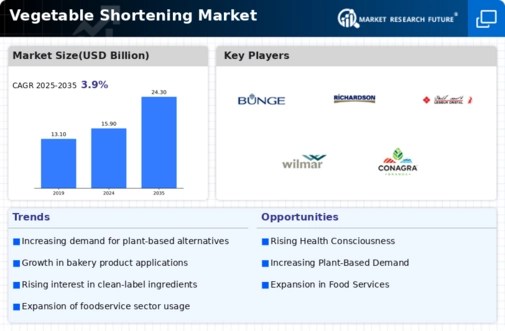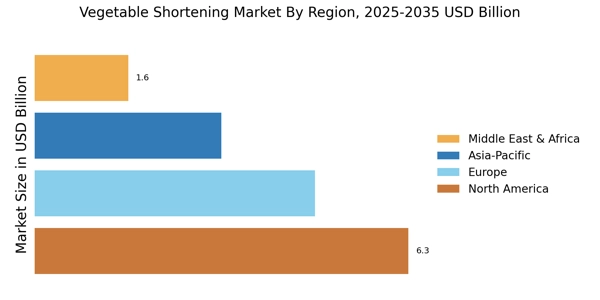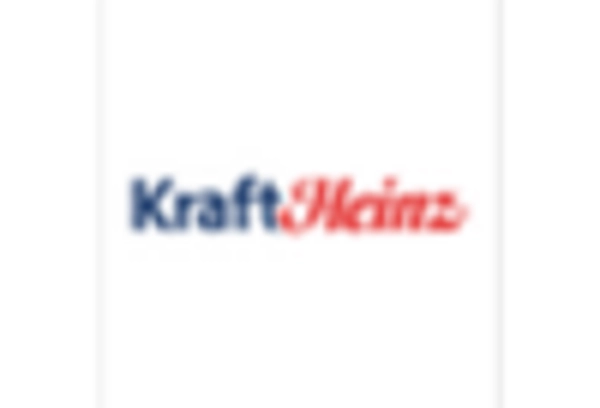North America : Market Leader in Shortening
North America is the largest market for vegetable shortening, accounting for approximately 40% of the global share. The region's growth is driven by increasing consumer demand for plant-based products and the rising popularity of baking and cooking at home. Regulatory support for healthier food options further catalyzes market expansion, with initiatives promoting the reduction of trans fats in food products.
The United States is the leading country in this market, with major players like Cargill, Archer Daniels Midland, and Kraft Heinz dominating the landscape. The competitive environment is characterized by innovation in product formulations and sustainability practices. Canada also plays a significant role, contributing to the market with its focus on organic and non-GMO shortening alternatives.
Europe : Emerging Market Dynamics
Europe is witnessing a significant shift towards health-conscious food choices, making it the second-largest market for vegetable shortening, holding about 30% of the global market share. The demand is driven by increasing awareness of health issues related to fats and oils, alongside regulatory measures aimed at reducing saturated fats in food products. The European Union's regulations on food labeling and health claims are also influencing consumer preferences towards healthier options.
Leading countries in this region include Germany, France, and the UK, where key players like Unilever and Bunge Limited are actively innovating to meet consumer demands. The competitive landscape is marked by a focus on clean-label products and sustainable sourcing. The presence of local manufacturers alongside The Vegetable Shortening Market environment, enhancing product availability and variety.
Asia-Pacific : Rapid Growth and Innovation
Asia-Pacific is rapidly emerging as a significant player in the vegetable shortening market, accounting for approximately 20% of the global share. The region's growth is fueled by increasing urbanization, rising disposable incomes, and a growing preference for convenience foods. Additionally, government initiatives promoting healthy eating habits are driving demand for vegetable-based products, creating a favorable regulatory environment for market expansion.
Countries like China, India, and Japan are leading the charge, with a mix of local and international players such as Wilmar International and MGP Ingredients. The competitive landscape is characterized by innovation in product offerings, including non-hydrogenated and organic options. The region's diverse culinary practices also encourage the development of specialized shortening products tailored to local tastes and preferences.
Middle East and Africa : Untapped Market Potential
The Middle East and Africa region is gradually emerging in the vegetable shortening market, holding about 10% of the global share. The growth is driven by increasing urbanization, changing dietary habits, and a rising demand for processed foods. Regulatory frameworks are evolving, with governments focusing on food safety and quality standards, which is expected to enhance market growth in the coming years.
Leading countries in this region include South Africa, Nigeria, and the UAE, where local and international players are beginning to establish a foothold. The competitive landscape is still developing, with opportunities for growth in both retail and food service sectors. Key players are exploring partnerships and investments to expand their market presence, catering to the growing consumer demand for vegetable shortening alternatives.


















Leave a Comment